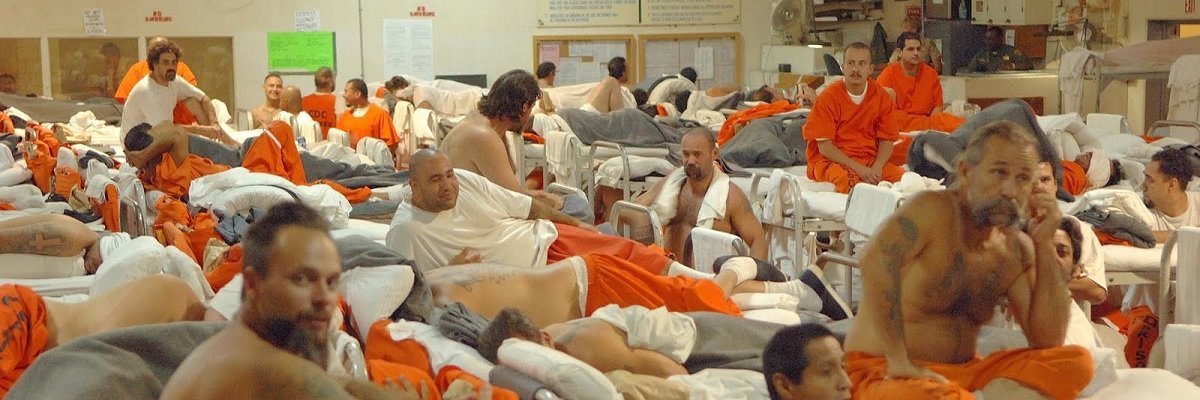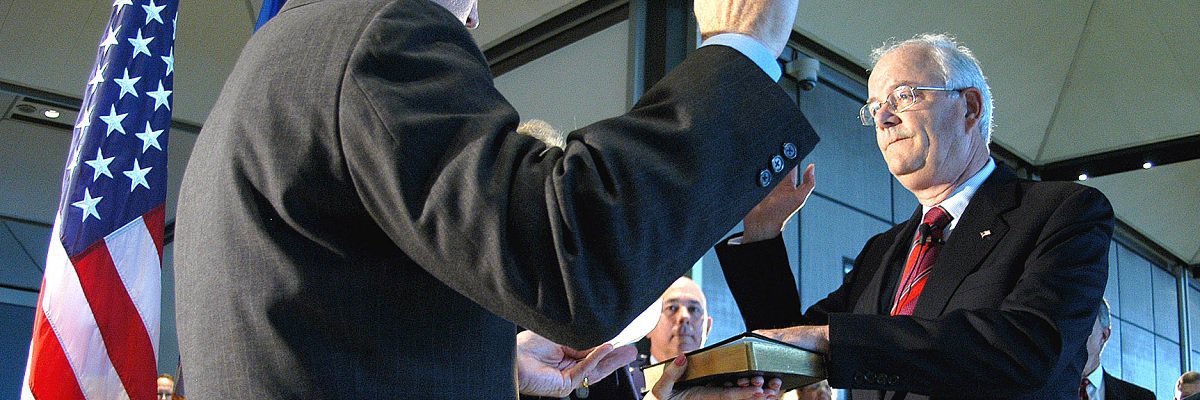“As a matter of symbolism and public policy,” Professor Ira Robbins wrote in a 1989 letter to the New York Times, “it may well weaken the integrity of the criminal-justice system when an inmate looks at his keeper’s uniform and, instead of seeing Department of Corrections, sees Acme Corrections Company.”

The question of the effect of private prisons - the whole package operation of incarceration facilities by a for-profit operator - has hung over the institution since its inception: the effect on inmates’ perception of the system to which they’re subjected; on the incentive-based operation of the place; on the employees, communities, and states in which they operate; and the effect on a conception of justice in the United States of America, purported land of the free.
Ultimately, though, one effect has taken precedence: that of cost.
It was the potential for a bargain that landed the stamp of approval forwarded by President Reagan’s Private Sector Survey on Cost Savings in 1984, itself fueled by the government’s narrative that it was the government itself in America’s way. We needed to “get the government off our backs.”
The alternative, it seems, was to replace it with a price tag.
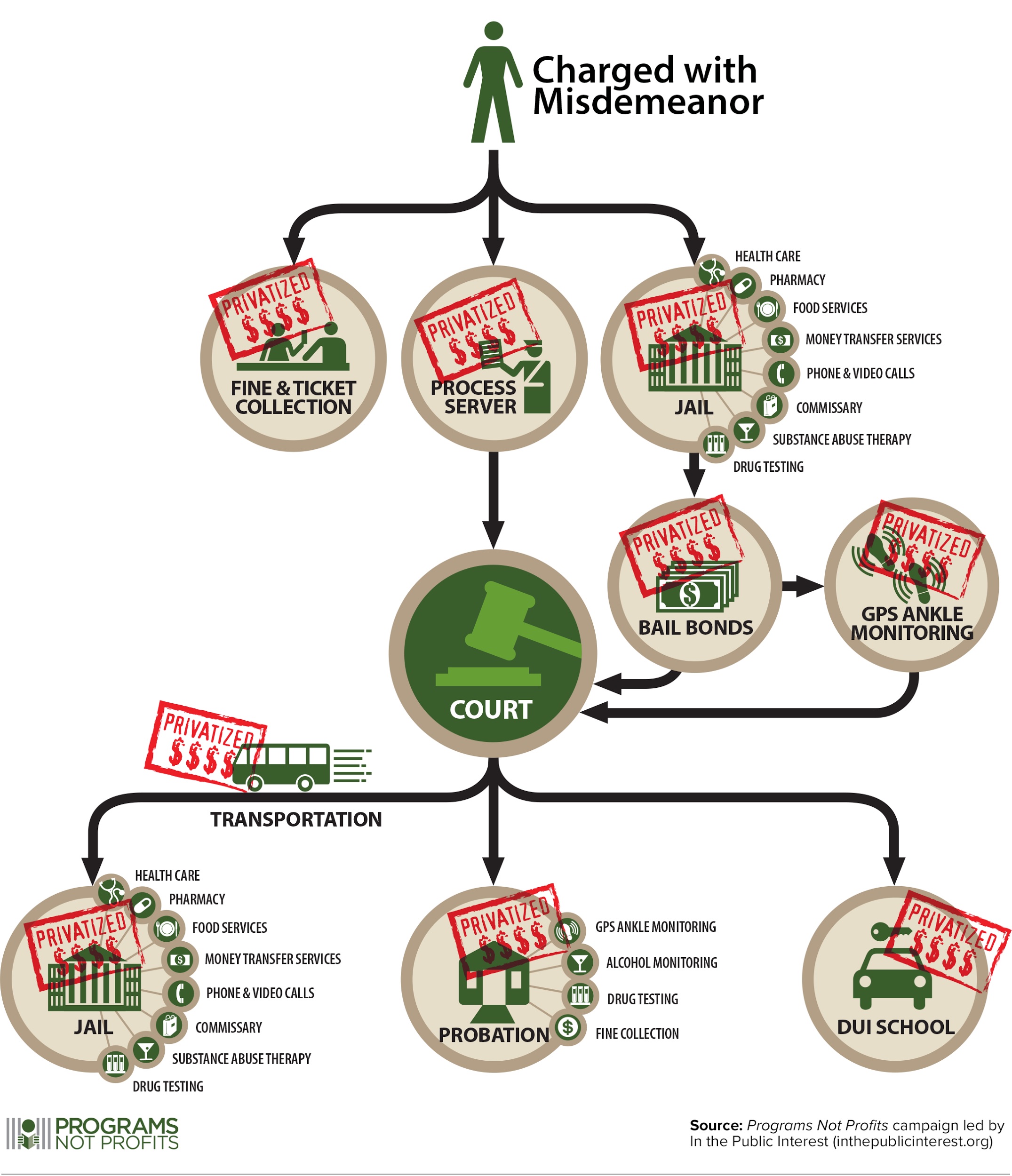
Infographic via In The Public Interest
Policies of punishment, law, crime, justice mutate with their people, and the policy of permitting Wall Street companies to house wards of the state remains unsettling after decades alongside other too-long-tolerated techniques of control.
In a national environment steaming with tensions between groups that ultimately, want the same thing - security - the wavering of confidence is palpable. In prison, the failure to receive sneakers you ordered or the healthcare you need is like another microaggression be played out by the state, an extrajudicial slap in the face. In a private prison, those microaggressions ripple out through extra medical bills, extra court fees, extra expenses incurred to monitor and police the population, control riots and escapes. They are employees of the state, and they are held by contract to nothing much better than the same standards our public facilities are.
They’re paid to house inmates - they’re not paid to care.
An eerie thing about private prisons is that they reduce human life to a day-by-day dollar-and-cents amount, the language of the Private Sector, where cost-cutting and efficiency are apparently taken for granted. They morph the complex effect an understaffed and unsatisfied workforce can have on a prison environment into a fine or a contractor swap. The criminal, the capitalist, and the conscience meet in the private prison, and the numbers are supposed to speak for them all.
Unfortunately, the numbers can say little when they barely exist.
The cost savings that were much touted at the start have barely an inkling of truth to them by official reports. This is partially because the employer itself, the government entities that sign on with private contractors, wouldn’t really have the metrics to make useful comparisons with those numbers anyway.

In 2007, the GAO came out with a report stating that at the Bureau of Prisons level, there weren’t accurate measures in place to determine whether or not there were any cost savings.
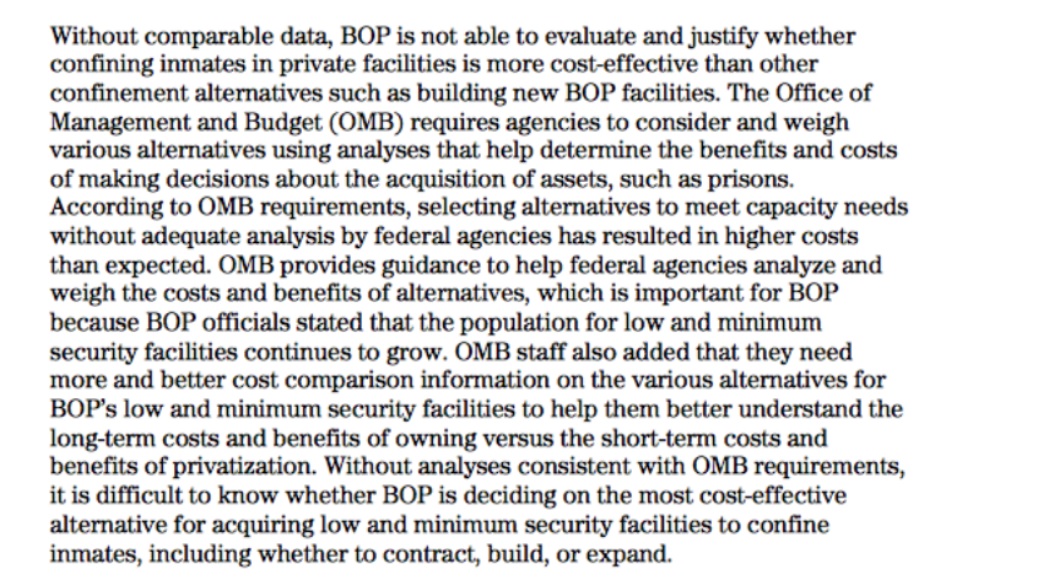
In Arizona, the FY 2013 budget eliminated a requirement that the Department of Corrections review the compared costs of private prison contracts and public operations.

In both cases, the reason cited was the cost of conducting the comparison itself, which would contribute to increased contract costs, which, could, theoretically, affect how they ultimately stack up. The BOP response straight-up denied that there might be any value to considering how to even measure whether private prisons were living up to their cost-saving credentials.

The same response provided a correction to the BOP’s mission statement, stating that the BOP provides “cost-efficient” control.

In another moment ripe for future conflict-of-interest consideration, the BOP letter was signed by Harley Lappin, the former head of the agency who went on to work for Corrections Corporation of America.
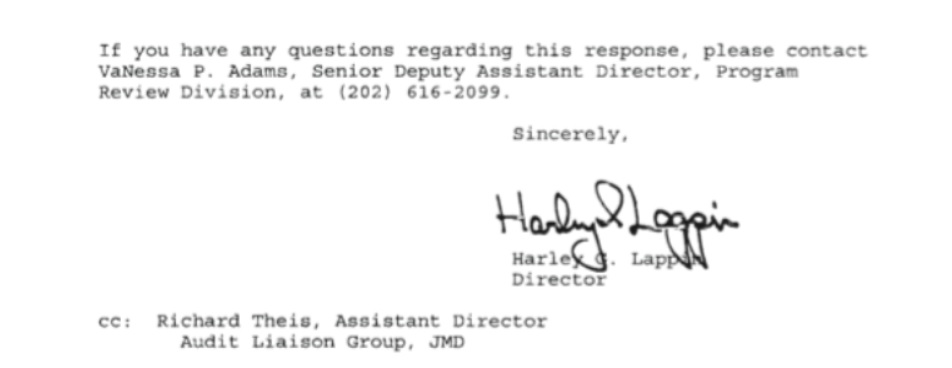
The inability to measure cost bodes poorly for other comparative efficacy studies. Early boasts of a 40% reduction in recidivism seem distant now, a world with a prison population so dramatically inflated, any such gains would need to be considered for wider application. And yet, both anti-private prison advocates and pro-privatization sympathizers, like the Reason Foundation, can agree the contracts that are often in place are working for the companies, not the people.
In a state with private prisons, like Florida or Arizona, for example, where the public prison system’s health care is itself privatized, the assumption that costs might come before care makes privatization policy particularly problematic. With restrictions on the degree of medical difficulty an inmate can pose, a prisoner excluded from private prisons would theoretically be in a private medical system left extra-taxed by the sample bias.

But the privatization of prisons is just one area where the policy has glaringly failed to prove itself worthy of the platform on which it stands. The ripple of the private prison effect isn’t limited to a single facility. Considerations of the wider effect of private prisons on the prison ecosystem are seemingly impossible, but it remains important to ask why that is.
After thirty years, billions of dollars, and hundreds of thousands of people through private prison doors, living in private prison states, we should ask if that’s something we should really be paying for.
Read Part 2 here
Image via California Department of Corrections
